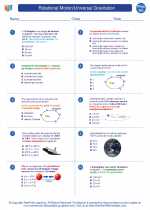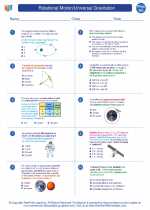The Solar System
The solar system is a collection of celestial bodies consisting of the sun, eight planets, their moons, and other objects such as asteroids and comets that are bound together by gravity. It is located in the Milky Way galaxy and is a fascinating subject of study in physics and astronomy.
The Sun
The sun is the central star of the solar system, providing the energy and light that sustains life on Earth. It is a massive, luminous sphere of plasma, and its gravitational pull holds the solar system together.
The Planets
There are eight planets in the solar system, categorized into two groups: the inner rocky planets (Mercury, Venus, Earth, and Mars) and the outer gas giants (Jupiter, Saturn, Uranus, and Neptune). Each planet has unique characteristics and orbits the sun in an elliptical path.
Inner Rocky Planets
- Mercury: Closest planet to the sun with extreme temperature variations.
- Venus: Known for its thick, toxic atmosphere and extreme greenhouse effect.
- Earth: Our home planet, rich in life and the only known planet to support life.
- Mars: Often called the "Red Planet" due to its reddish appearance, with evidence of past water and potential for life.
Outer Gas Giants
- Jupiter: Largest planet in the solar system with a strong magnetic field and iconic red spot.
- Saturn: Known for its spectacular ring system made of ice particles and rock fragments.
- Uranus: Tilted on its side, giving it unique rotational characteristics.
- Neptune: Farthest planet from the sun and known for its strong winds and blue coloration.
Moons, Asteroids, and Comets
Many of the planets have moons, such as Earth's moon and Jupiter's Galilean moons. Additionally, the solar system contains numerous asteroids and comets, which are remnants from the formation of the solar system.
Studying the Solar System
Studying the solar system involves various scientific disciplines, including physics, astronomy, and planetary science. Observational techniques, space missions, and theoretical models contribute to our understanding of the solar system's formation, dynamics, and evolution.
Conclusion
The solar system is a complex and dynamic system that offers a wealth of opportunities for scientific exploration and discovery. Understanding its properties and interactions through the lens of physics provides invaluable insights into the broader cosmos and our place within it.
[Solar System] Related Worksheets and Study Guides:
.◂Physics Worksheets and Study Guides High School. Rotational Motion/Universal Gravitation

 Worksheet/Answer key
Worksheet/Answer key
 Worksheet/Answer key
Worksheet/Answer key
